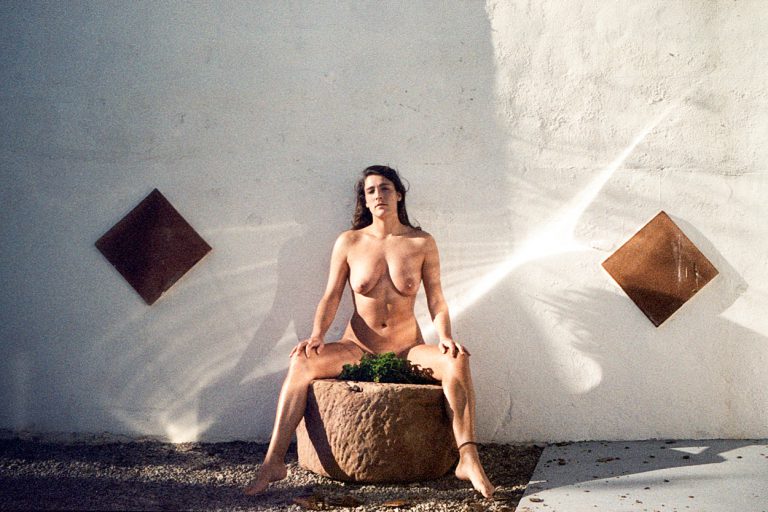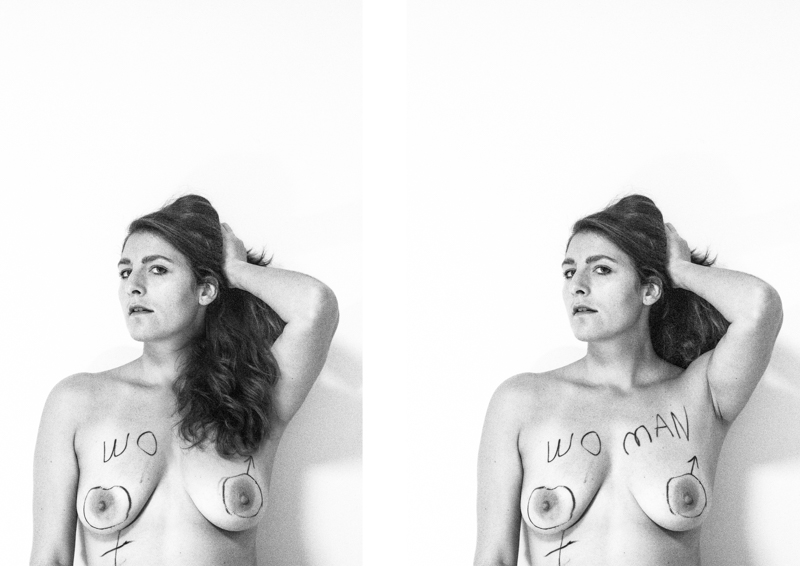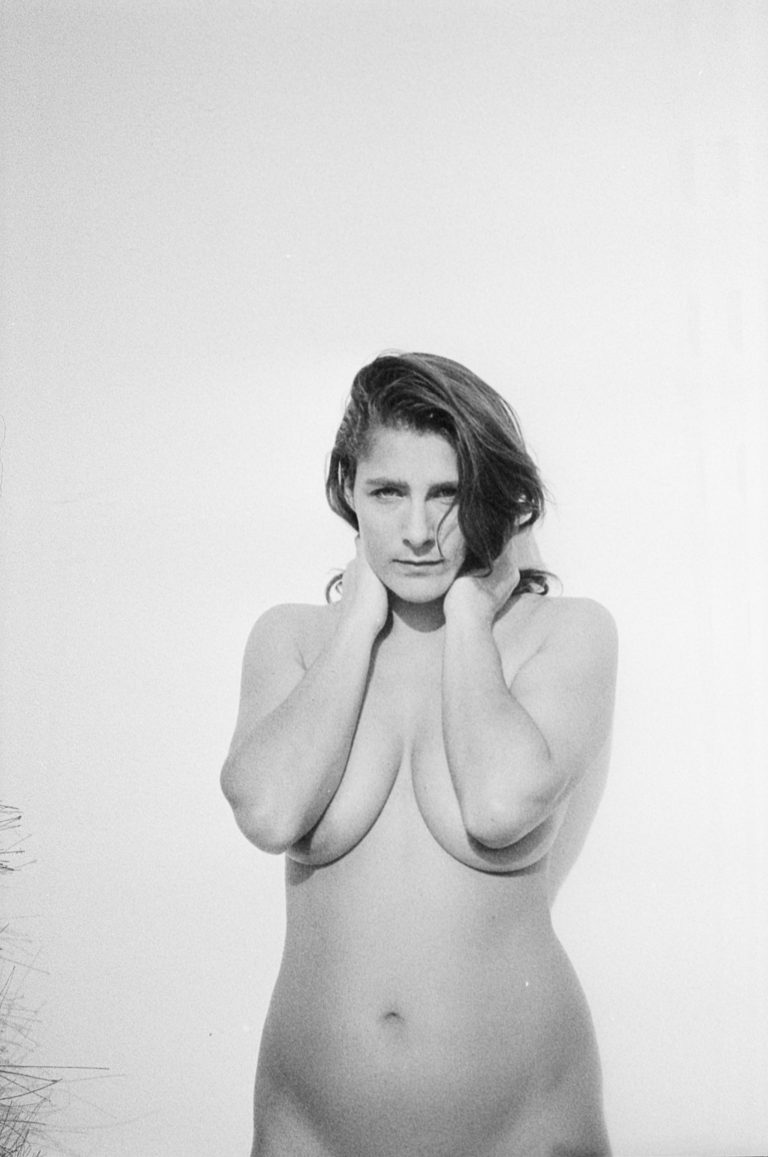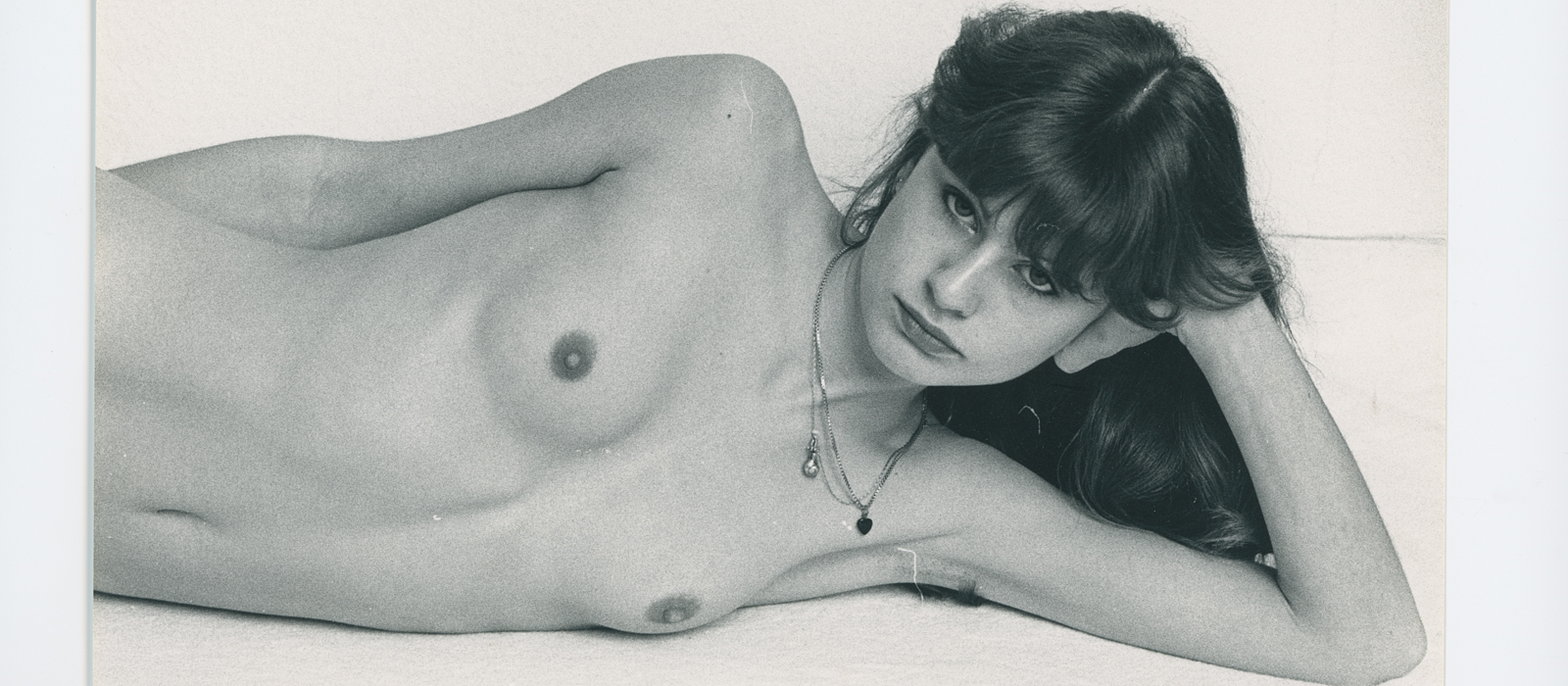How do images of our body change the way we see ourselves?
The human body is central to our understanding of identity. We alter our bodies and clothing to align with our gender, sexuality, race, and ethnicity.
I grew up with a very open-minded view on the body. In the world around me, however, I see that my body – the female body – is being idealized, judged, sexualized and censored.
One day I stumbled upon a nude photo archive of my parents. The way they showed their bodies felt real and honest.
It became the start of a series of self-portraits in which I investigate the representation of my own body and how that influences my sense of self.

How can we free the body from its script?

Am I a woman? A man? Both? My body is just a body. Yet as soon as we are born, we pick a label for each type of body to make the world more understandable.
Gender is prescribed by social order. My body acts this script without noticing. The question is if our bodies need this script.
Can we free the body from labels and also see the body as an entity that ‘acts’ and ‘feels’ rather than ‘is’?
We are so used to looking at bodies that we forget how it feels when our skin touches the earth. How our body feels when we take on certain body positions. When we are just into the act of doing instead of looking.
So that’s what I did. Positioning my body and investigating how that feels. Because I work with analog camera’s, it really gave me the freedom to first feel and then look.
The body can act, feel and give new meaning.
My body exists. My body lives. My body is present. My body breaths. My body stands. My body sits. My body moves. My body senses. My body feels. My body plays. My body believes. My body communicates. My body touches. My body speaks. My body listens. My body connects. My body eats. My body drinks. My body bleeds. My body hurts. My body destroys. My body restores. My body serves. My body loves. My body caresses. My body helps. My body cares. My body gives. My body takes. My body craves. My body desires. My body discharges. My body charges. My body achieves. My body creates. My body debates. My body changes. My body evolves. My body adapts. My body grows. My body develops. My body ages. My body resists. My body recovers. My body matures. My body spiritualizes. My body dreams. My body rests. My body ignores. My body fights. My body battles. My body accepts. My body decays. My body is mortal.
Our bodies are a work of art that can express meaning
For a while, I started pointing my camera at others. It took me quite a while before I got back to my own body, my self-portraits.
One day I found an old role of 35mm Polaroid film from my deceased father. I took the film with me to Spain, together with some other black and white films.
I started experimenting again with body postures and actions. Merging my body with the environment. Playing with light and forms.
Working with my own body feels comfortable. I can decide. Nobody is watching. It is just me, my body and I.
My body speaks what my words cannot reveal
A posture, a gaze, an act. It is the non-verbal communication of our bodies.
During the project I realized that I feel a strong connection with my body. I explored how different postures and acts of the body make me feel.
It is interesting to notice that the judging comes afterwards, at the moment you see the pictures. This judging happens in the mind of the viewer who was not there at the moment the photo was taken, who is influenced by the scripts our bodies have acquired. The difficulty is that these days we do not take much time to really understand what we see, let alone that we change our perspective.


When I focus on the actions and sensory experiences of my body, I lose judgment and with it any sense of shame. I accept my body as an entity that ‘acts’ and ‘feels’ rather than an object that simply ‘is’ and can be ‘looked at’. It gives a feeling of freedom.
In the beginning I was also preoccupied with searching for this balance between my feminine and masculine sides. In the end, I question whether this dichotomous division really exists. We can be vulnerable and strong at the same time. Anyone can be.
Our bodies communicate. It is only we have to be aware of what we communicate and how we interpret the communication.


